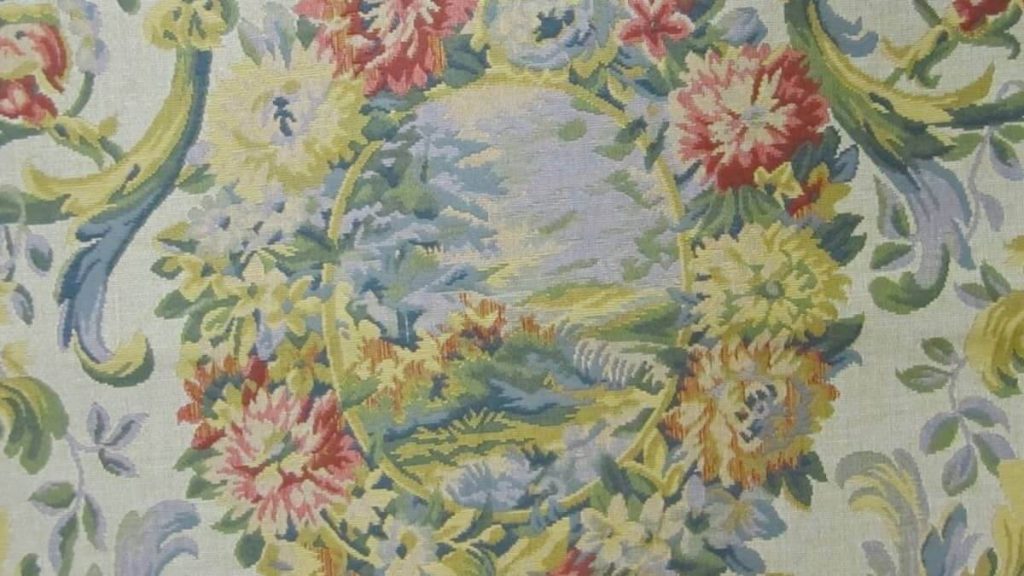Content Attributes
Several art models have dazzled the human souls as they seem stunning and engaging and at the same time amaze them because of the extremely fine and arduous detailing work. Tapestry is one such gift by former people which is making and decorating the homes of people with its bewitchery. It is fundamentally a woven artwork where complex designs and pictures that sometimes depict some profound meaning or tale are weaved using colorful threads or fabrics.
These designs come under multiple categories such as animals, patterns, landscapes, birds, humans, fights, battles, tree of life tapestries, etc. They can be employed to embellish your sofa, walls, furniture, tables, and even curtains. Wouldn’t it be intriguing to know what kind of fabrics or techniques are used to weave such an attractive piece for your home? This detailed piece of article will be a guide to tapestry fabric and techniques that will bring you closer to this spectacular art.

Tapestry Fabric
Artists usually weave using wool fabric on the tapestry. Wool is enduring, available perpetually, and operable. Often different dyed wool fabrics are applied to create different examples and figures on the tapestry.
However, other fabrics such as linen, cotton, or silk threads enhance the tapestry and supply it a shine that wool fails to give. To accommodate better contrast and glare to dull artwork, silk fabric is utilized as a weft. For instance, tree of life tapestries may look boring if woven with solely wool thread while if the silk thread is used to make the fruits and leaves of the tree, the wall hanging will come up as a magnetic view to the eyes.
Moreover, European weavers practiced gold and silver thread weft along with wool to give a luxurious appearance to the tapestry. Hence, numerous combinations of fabrics are employed on the same canvas to make it pretty and appealing and highlight the key areas.
Tapestry Techniques
There are countless techniques that the artist handles to make a unique and impressive tapestry. These techniques help a rookie to learn how to carve a picture or design while it assists other weavers to make eye-catching stuff for people. Here are a few tapestry techniques:
Joins
Since the entire design and styling are done by moving the thread, one should know how to bring the threads synchronically. Under the joins technique, the threads of different colors are joined together to form a beautiful scene.
Hachure
Detailing makes the tapestry appreciable. Hachure is a procedure where colorful weft threads are utilized to render detailing in-depth through triangle shapes. Two tones of the same color are used to run on each other. One can be dark and the other shade can be light to create a shading effect.
Hatching
Hatching is more or less similar to hachure. Here the alternate colors are applied to create color gradation and color contrast. Hachure and hatching are used together to highlight different yet same-toned colors.
Blending
Different colored threads are amalgamed unitedly before weaving to make a weaving thread and use to weave for tapestry. It is a modern technique to create the mottled effect with blended yarns from Mary Maxim. A distinctive mixture of the thread presents the tapestry as handsome and elegant.
Color compound
In this way, primarily, the individual color of the weft thread is employed to weave. Not the entire tapestry is carved out with the same color. Half of it is carved while where the thread ends, a different color is used from there to weave. Such things proffer a nice color transition and visibility of the outline.
Interlocking
The two or more color shares are curved through each other amidst the two warp mark made in each color margin. Following the completion, the covering looks smooth and the complete artwork resembles a painting. Interlocking can be single interlocking or double interlocking. When the threads are intertwined through the contrary side only, that’s proclaimed as double interlocking.
Diagonal technique
To break lines between a couple of color sections in a design, threads are weaved using the diagonal technique. It is the primary technique that is learned in the inception and later, complex techniques are taught.
Plain Cloth or twill Method
In the plain cloth method, the filling threads are passed over and under the warp yarns while in the twill method, the filling is done diagonally. Threads are passed in two or more warp either from the right or left making it diagonal ribbing.
Mille Fleurs
One of the parts of the medieval period decorative technique, this method weaves small flowers, plants, and other flora on a green background. Inspired by this technique, tree of life tapestries constructed by Morris and Co contains different plants, leaves, and stems emerging from the center and is designed for wall hangings or for the ceiling. These sorts of decorative techniques intensify the craft in tapestries.
Bottom Line
Tapestry is an unusual artwork made with pieces of thread. The yarns are utilized in a remarkably creative and unique way that catches the sight of everyone in the room. People prefer tapestries to adorn their homes and home accomplices magnificently.
One can pick any variety such as painting tapestries, animals, different boho tapestries, landscapes, and even tree of life tapestries which actually give you a feel as if you are living in the land of nature. Different techniques impersonate a vital position in building a stunning tapestry. Moreover, the kind of fabric employed to implement flash is also one of the key elements in creating a satisfying design.



